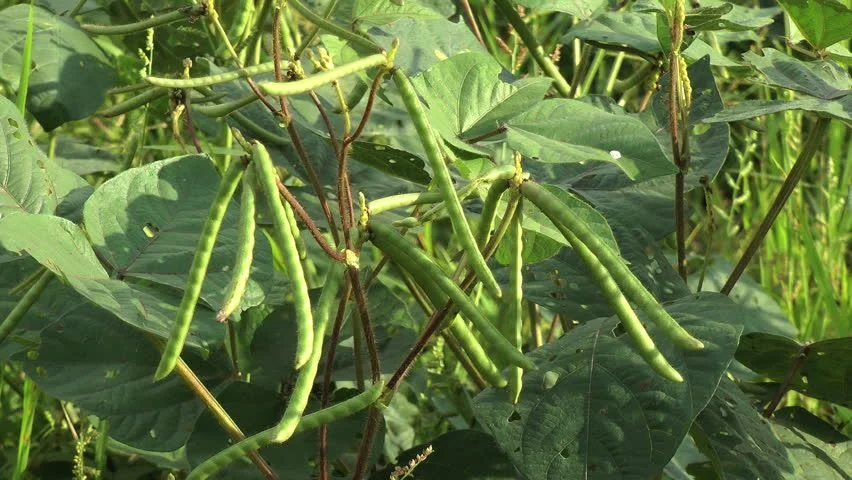
Mung Bean
Vigna radiata
Basic Information
🌿 Family: Fabaceae🗺️ Zone: 6-13
Other Names:
- Green Gram
- Golden Gram
🌡️ Ideal Temperature : 65°F – 85°F
🔥 Heat Tolerance: Up to 95°F
❄️ Cold Tolerance: Down to 50°F
🌱 Type: Annual
Layers
- Herbaceous
Functions
- Edible
- Nitrogen Fixer
- Ground Cover
Pests
No pests associated with this plant.
Description
Mung bean (*Vigna radiata*), also known as green gram, is an annual vine with yellow flowers and fuzzy brown pods. It reaches heights between 15–125 cm (6–49 inches). The plant has a well-developed root system with numerous slender lateral roots bearing nodules that facilitate nitrogen fixation. Stems are highly branched, sometimes twining at the tips, and can be purple or green when young, maturing to grayish-yellow or brown. Leaves are ovate, measuring 6–12 cm in length and 5–10 cm in width. The plant produces racemes with yellow flowers, leading to elongated cylindrical pods containing 12–14 seeds each. These seeds vary in color—green, yellow, brown, or blue—and can be either cylindrical or spherical in shape.
🌞💧 **Sun and Water Requirements:**
Mung beans thrive in full sun and require well-drained soil with consistent moisture. They are drought-tolerant but perform best with regular watering, especially during flowering and pod development.
✂️🫘 **Methods to Propagate:**
Propagation is primarily through direct seeding. Sow seeds 2.5–5 cm deep in warm soil after the last frost. Germination occurs within 4–5 days under optimal conditions.
🧑🌾👩🌾 **When to Harvest:**
Harvest occurs approximately 60–70 days after planting. Pods are ready when they turn brown and dry. For sprout production, seeds can be harvested earlier and germinated indoors.
Purpose
- **Edible:** Mung beans are consumed worldwide in various forms, including whole beans, sprouts, and as an ingredient in soups, salads, and desserts.
- **Nitrogen Fixer:** Through symbiosis with Rhizobia bacteria, mung beans fix atmospheric nitrogen, enriching soil fertility for subsequent crops.
- **Ground Cover:** When used as a cover crop, mung beans suppress weeds and prevent soil erosion, contributing to sustainable farming practices.